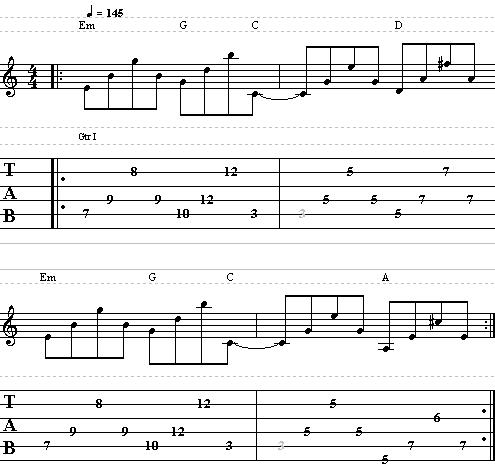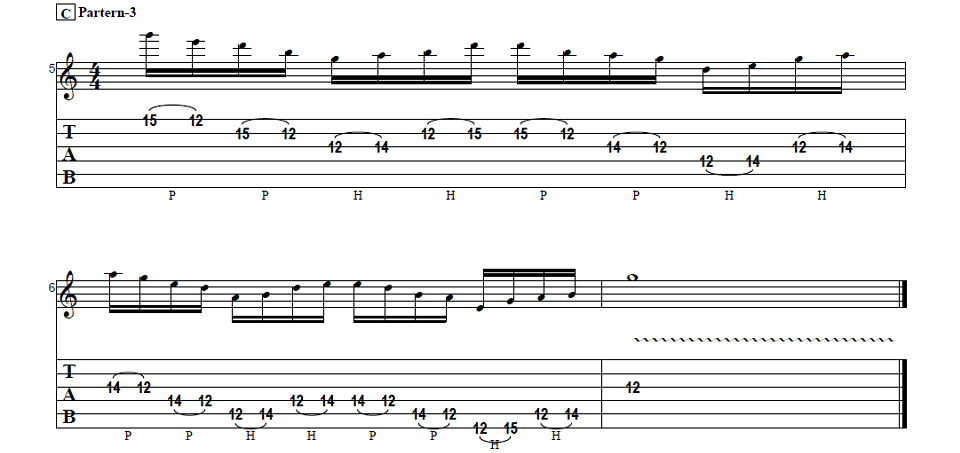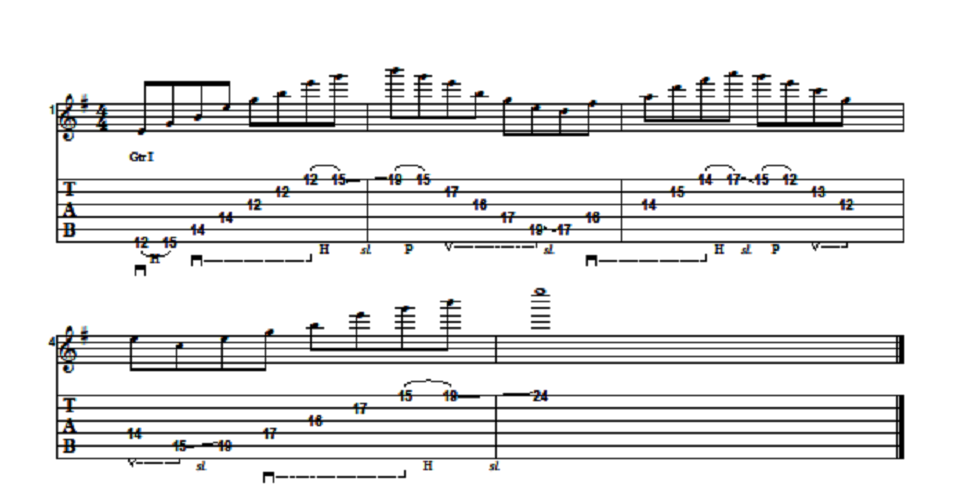What’s one of the main things we all love about rock ‘n roll? Is it the killer riffs, the screaming vocals, the pounding drumbeats, or the chugging bass lines? Well, maybe, but we’re forgetting one other thing… sick guitar solos! Everyone loves it when they hear some real shredding and beautiful melodies from rock guitar players, but then we forget how these guitarists are able to write these solos in the first place, which is through scales. If you’re aching to solo like the masters, there are definitely a few scales that are very commonly used in rock that you should look into:
Check out this VIDEO GUITAR LESSON ON A COOL SCALE
The Minor Pentatonic: The minor pentatonic scale is perhaps one of the first scales any guitarist learns who’s interested in rock music, and that’s because it’s one of the most common. It’s also one of the easiest scales to memorize because it follows a fairly basic pattern. Because of its general simplicity, it’s easy for even beginning guitarists to start soloing with.
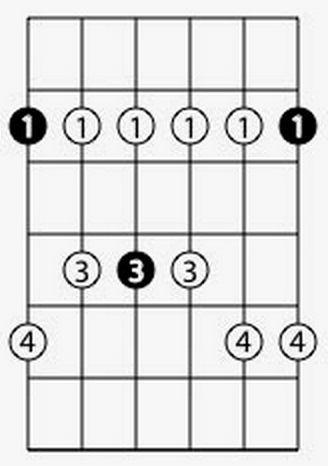 The Major Scale: The major scale is another great rock guitar scale that most beginning players start with (if they don’t start with the minor pentatonic). From the major scale, you have a whole world of possibilities ahead of you because of the different modes that are formed from it. It’s also very popular for writing chord progressions, so if you’re interested in songwriting, this would be the scale for you.
The Major Scale: The major scale is another great rock guitar scale that most beginning players start with (if they don’t start with the minor pentatonic). From the major scale, you have a whole world of possibilities ahead of you because of the different modes that are formed from it. It’s also very popular for writing chord progressions, so if you’re interested in songwriting, this would be the scale for you.
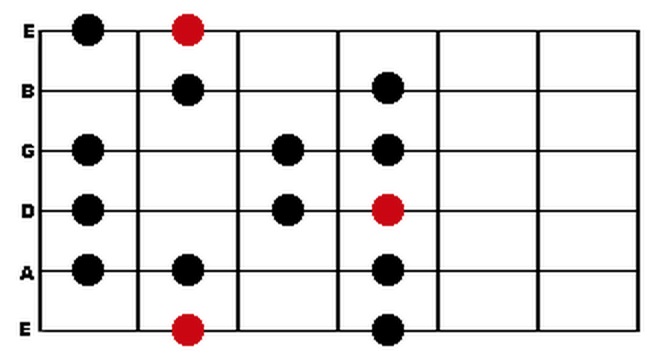 The Blues Scale: Finally, we’re going to talk about the blues scale, which is very similar to the minor pentatonic, only with an added note. Much of rock has its roots in the blues, so this scale is also very commonly used, even if you don’t realize it and even if you’re not a blues player. Particularly with this scale, try incorporating some extra techniques such as vibrato or bends to give yourself a real blues feel.
The Blues Scale: Finally, we’re going to talk about the blues scale, which is very similar to the minor pentatonic, only with an added note. Much of rock has its roots in the blues, so this scale is also very commonly used, even if you don’t realize it and even if you’re not a blues player. Particularly with this scale, try incorporating some extra techniques such as vibrato or bends to give yourself a real blues feel.
 For scales to be the most effective, you want to make sure you practice them up and down the neck, in all positions on the fretboard, until you have them memorized and they become second nature to you. Then you’ll be able to just get into a groove and solo without having to constantly think about which notes to use. Great players are constantly using these rock guitar scales, so if you listen to many rock songs, the chances are high that you’ll come across these very often.
If you want to get better with your lead playing, I recommend you to check out our:
BEST SELLING LEAD GUITAR COURSE
For scales to be the most effective, you want to make sure you practice them up and down the neck, in all positions on the fretboard, until you have them memorized and they become second nature to you. Then you’ll be able to just get into a groove and solo without having to constantly think about which notes to use. Great players are constantly using these rock guitar scales, so if you listen to many rock songs, the chances are high that you’ll come across these very often.
If you want to get better with your lead playing, I recommend you to check out our:
BEST SELLING LEAD GUITAR COURSE
 The Major Scale: The major scale is another great rock guitar scale that most beginning players start with (if they don’t start with the minor pentatonic). From the major scale, you have a whole world of possibilities ahead of you because of the different modes that are formed from it. It’s also very popular for writing chord progressions, so if you’re interested in songwriting, this would be the scale for you.
The Major Scale: The major scale is another great rock guitar scale that most beginning players start with (if they don’t start with the minor pentatonic). From the major scale, you have a whole world of possibilities ahead of you because of the different modes that are formed from it. It’s also very popular for writing chord progressions, so if you’re interested in songwriting, this would be the scale for you.
 The Blues Scale: Finally, we’re going to talk about the blues scale, which is very similar to the minor pentatonic, only with an added note. Much of rock has its roots in the blues, so this scale is also very commonly used, even if you don’t realize it and even if you’re not a blues player. Particularly with this scale, try incorporating some extra techniques such as vibrato or bends to give yourself a real blues feel.
The Blues Scale: Finally, we’re going to talk about the blues scale, which is very similar to the minor pentatonic, only with an added note. Much of rock has its roots in the blues, so this scale is also very commonly used, even if you don’t realize it and even if you’re not a blues player. Particularly with this scale, try incorporating some extra techniques such as vibrato or bends to give yourself a real blues feel.
 For scales to be the most effective, you want to make sure you practice them up and down the neck, in all positions on the fretboard, until you have them memorized and they become second nature to you. Then you’ll be able to just get into a groove and solo without having to constantly think about which notes to use. Great players are constantly using these rock guitar scales, so if you listen to many rock songs, the chances are high that you’ll come across these very often.
If you want to get better with your lead playing, I recommend you to check out our:
BEST SELLING LEAD GUITAR COURSE
For scales to be the most effective, you want to make sure you practice them up and down the neck, in all positions on the fretboard, until you have them memorized and they become second nature to you. Then you’ll be able to just get into a groove and solo without having to constantly think about which notes to use. Great players are constantly using these rock guitar scales, so if you listen to many rock songs, the chances are high that you’ll come across these very often.
If you want to get better with your lead playing, I recommend you to check out our:
BEST SELLING LEAD GUITAR COURSE 